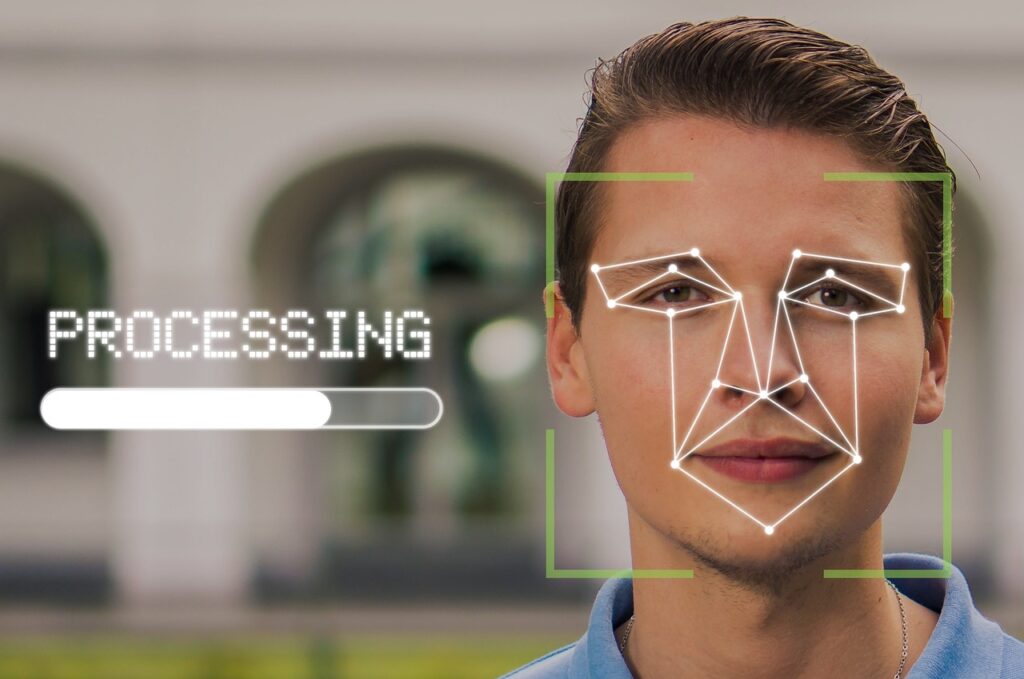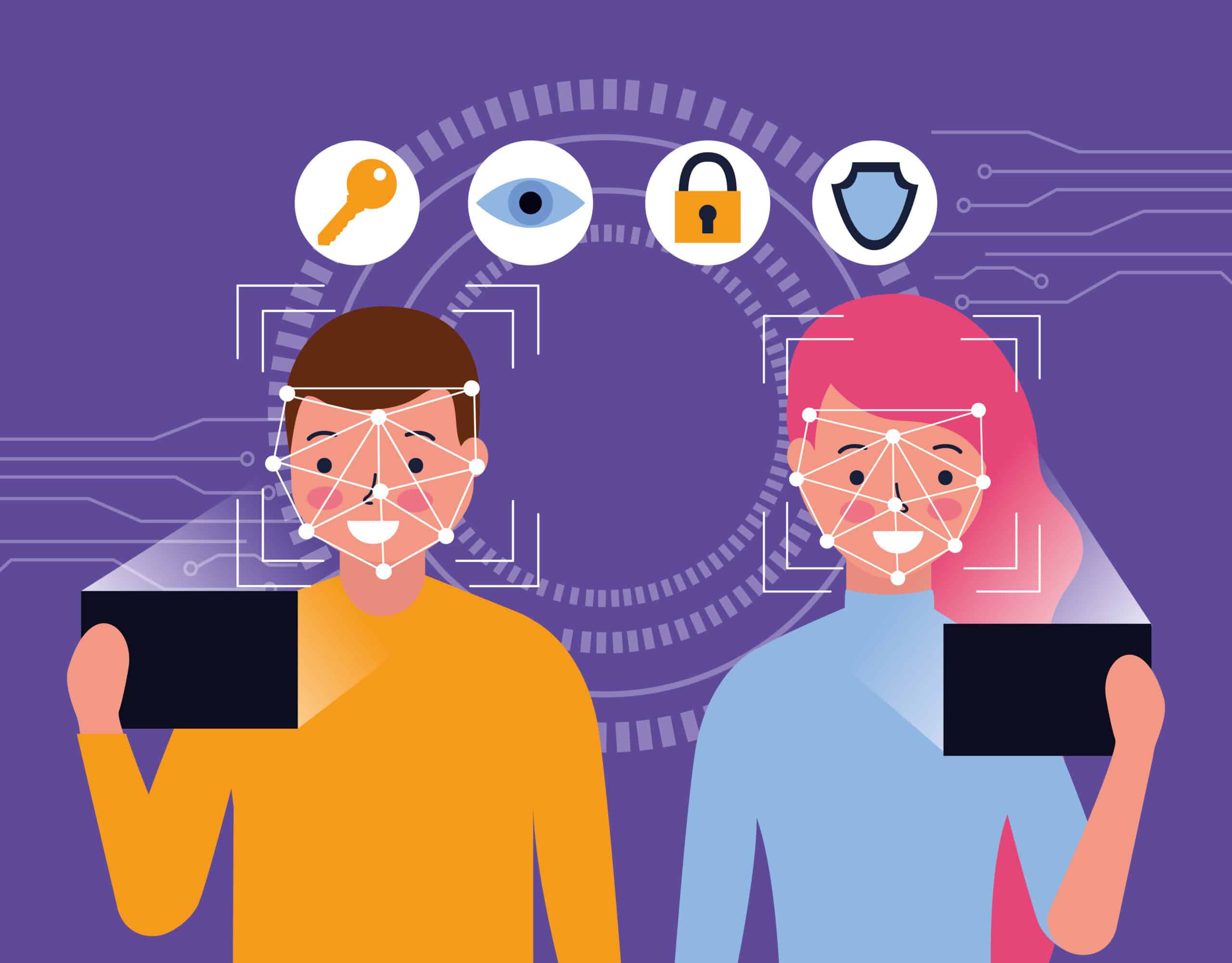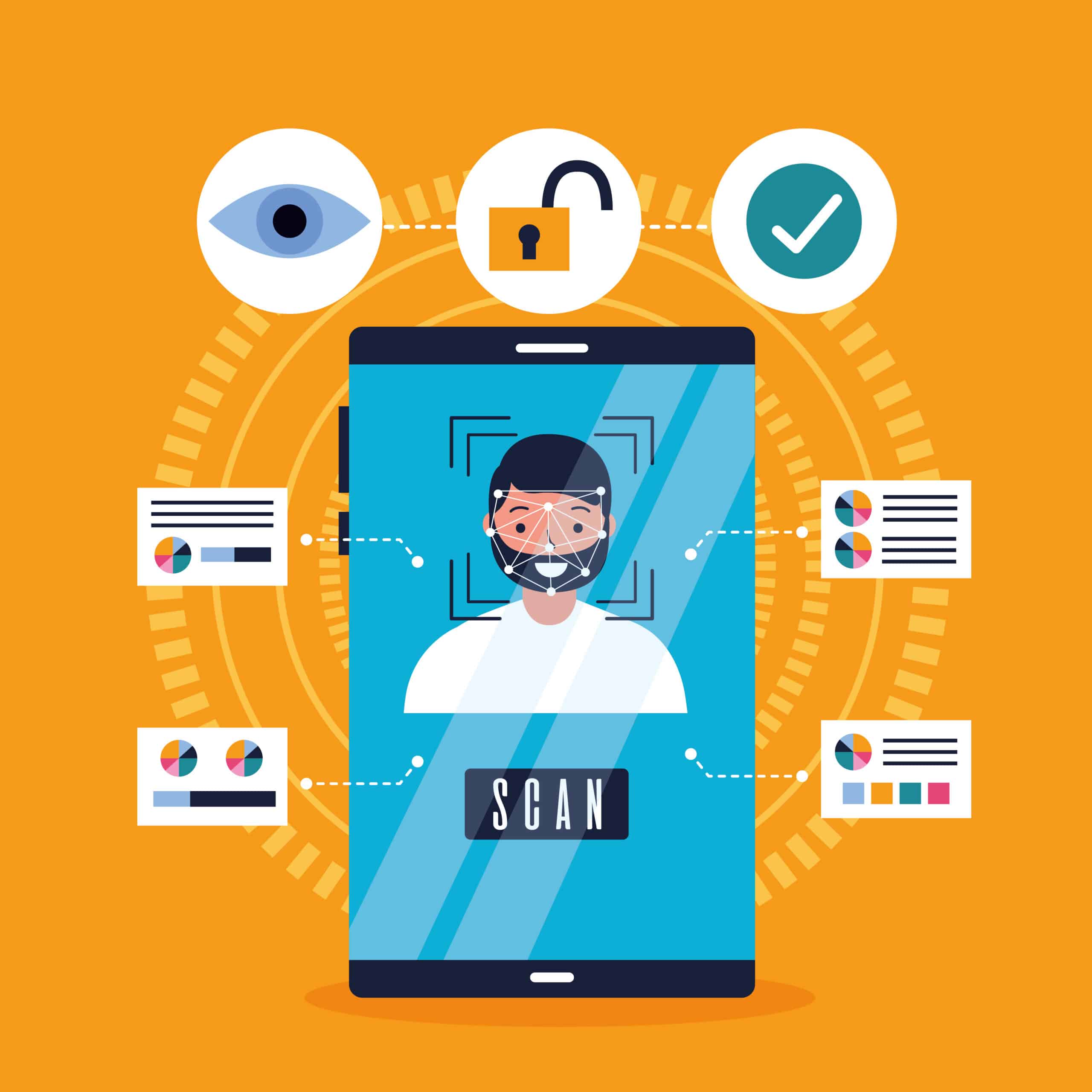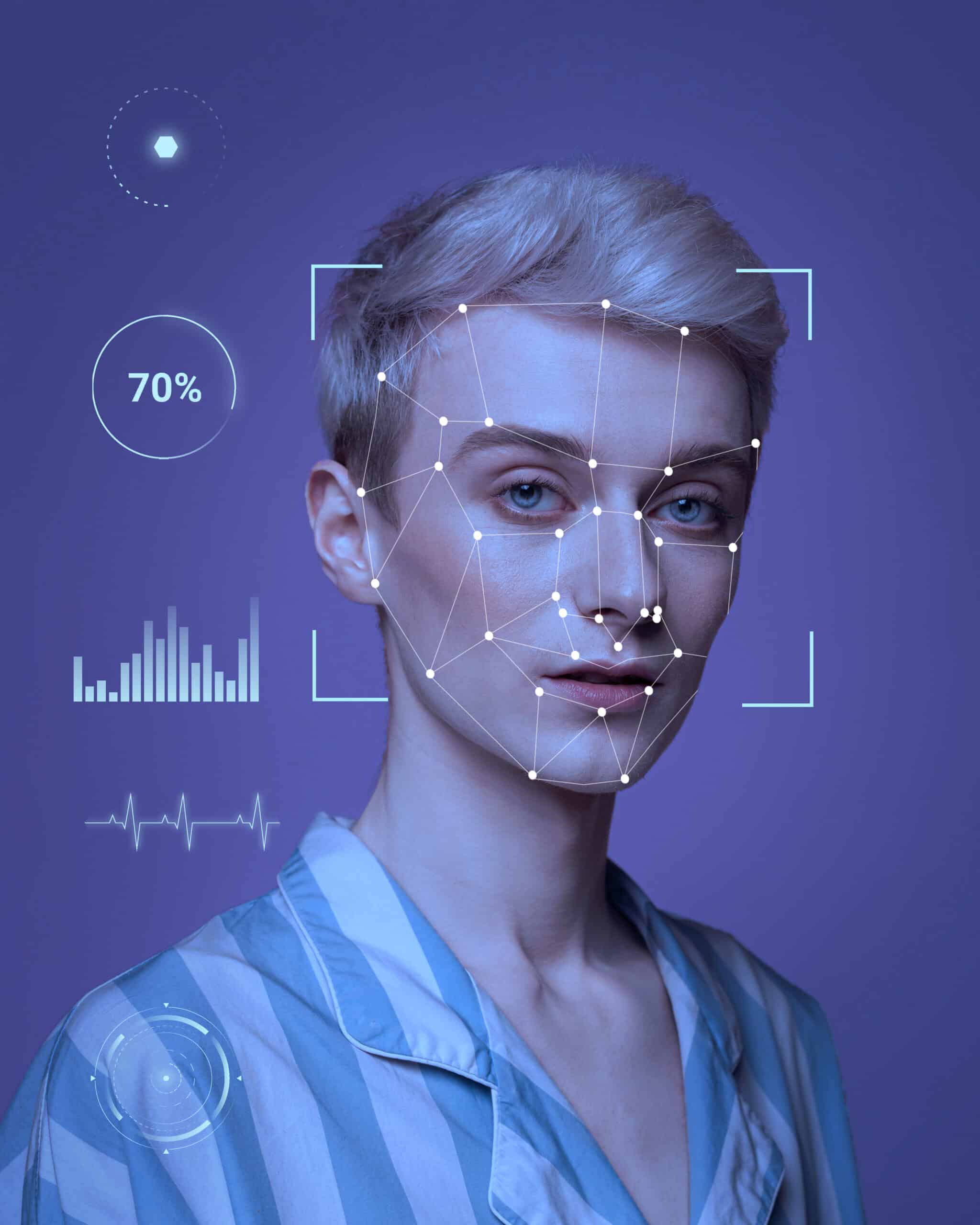The Importance of Facial Recognition Identity Verification for Secure Transactions


Facial recognition identity verification is a cutting-edge technology that is revolutionizing the way we safeguard transactions. We will explore facial recognition for secure transactions, its importance in enhancing security and preventing fraud, and the various types of facial recognition technology available.
We will discuss the potential risks associated with facial recognition, its use in transactions both online and in-person, and the legal and ethical considerations that must be taken into account. Let’s dive in to discover the world of facial recognition identity verification!
What Is Facial Recognition Identity Verification?
Facial Recognition Identity Verification is a cutting-edge technology that utilizes biometric data, specifically facial features, to authenticate and verify a person’s identity. This process involves capturing unique aspects of an individual’s facial structure, such as eyes, nose, and mouth, which are then analyzed by algorithms to create a digital facial template. These templates are compared with stored data for a match, ensuring secure authentication.
Technological advancements have enhanced the accuracy and speed of facial recognition, making it a reliable method for identity verification. By using biometric data for authentication, facial recognition technology offers a more secure and convenient way to confirm individuals’ identities, reducing the risk of fraudulent activities.
How Does Facial Recognition Identity Verification Work?
Facial Recognition Identity Verification works by capturing facial features through specialized technology, comparing them with stored data, and using complex algorithms to authenticate the individual’s identity. This process typically begins by capturing an image of the person’s face, which involves various steps such as detecting key facial landmarks, measuring distances between features, and converting the image into a mathematical representation.
The captured facial data is then analyzed using biometric algorithms that identify unique patterns and features. Once the data is analyzed, the system compares it with the stored template to determine if there is a match, thus verifying the individual’s identity.
Why Is Facial Recognition Identity Verification Important?
Facial Recognition Identity Verification holds immense importance in safeguarding transactions and ensuring the security of online interactions through robust authentication and fraud prevention measures.By implementing facial recognition technology, businesses can enhance their security protocols significantly. This advanced form of identity verification not only provides an extra layer of protection against unauthorized access but also helps in preventing identity theft and fraudulent activities.
The unique biometric data captured through facial recognition adds a high level of security to any transaction, making it difficult for malicious actors to breach sensitive information. The seamless integration of facial recognition technology streamlines the verification process, ensuring a smooth and secure user experience for individuals engaging in online transactions.
Enhanced Security
Enhanced security is a critical aspect of facial recognition identity verification, providing a secure framework for authentication, ensuring safe and encrypted transactions, and bolstering cybersecurity measures. Through the use of advanced algorithms and biometric data, facial recognition technology plays a key role in verifying the identity of individuals, allowing for seamless and secure access to sensitive areas, systems, and information.
By accurately authenticating users based on unique facial features, organizations can prevent unauthorized access, safeguard confidential data, and mitigate security risks. This technology also enhances the efficiency of secure transactions by validating the identities of individuals through facial biometrics, reducing the reliance on traditional methods like passwords or PINs.
Fraud Prevention
Fraud prevention is a key benefit of facial recognition identity verification, as it aids in detecting and preventing identity theft, implementing anti-fraud measures, and ensuring secure banking transactions. By utilizing advanced facial recognition technology, financial institutions can enhance their security protocols by requiring biometric authentication, making it more challenging for fraudsters to gain unauthorized access to accounts.
This extra layer of identity verification not only safeguards customer information but also serves as a powerful deterrent against fraudulent activities. With the rise of cyber threats and sophisticated fraud schemes, the integration of facial recognition into fraud detection systems has become crucial for maintaining the integrity of banking transactions and protecting individuals’ financial assets.
Improved User Experience
Facial recognition identity verification enhances the user experience by streamlining user verification processes, ensuring secure online transactions, protecting personal information, and strengthening e-commerce security. This technology offers a seamless way for individuals to authenticate their identity without the need to remember detailed passwords or answer numerous security questions. By simply scanning their face, users can swiftly and accurately verify who they are, making the authentication process more convenient and efficient.
Facial recognition adds an extra layer of security to online transactions, reducing the risk of fraudulent activities and unauthorized access. This not only enhances the overall user experience but also instills confidence in consumers when conducting e-commerce transactions, ultimately leading to increased trust and loyalty towards online platforms.
What Are The Different Types Of Facial Recognition Technology?
Facial Recognition Technology encompasses various types, including 2D facial recognition, 3D facial recognition, thermal facial recognition, and skin texture analysis, each leveraging distinct methodologies for identity verification.
- 2D facial recognition technology relies on analyzing two-dimensional images to map facial features, commonly used in smartphones for unlocking devices or tagging photos.
- In contrast, 3D facial recognition captures depth information, providing enhanced security and accuracy for applications like access control.
- Thermal facial recognition, on the other hand, measures heat patterns emitted by the face, making it ideal for identifying individuals in low-light environments.
- Skin texture analysis evaluates unique skin patterns for personalized authentication, often utilized in healthcare for patient identification.
2D Facial Recognition
2D Facial Recognition technology utilizes two-dimensional images of faces to verify identities, providing a reliable method for secure identity verification in various settings. This technology works by capturing and analyzing key characteristics of a person’s face, such as the distance between the eyes, shape of the nose, and contours of the jawline. These features are then compared to a database of stored images for identification purposes.
2D facial recognition systems are commonly used in access control systems, border security, and law enforcement to quickly and accurately match faces against a known database. The convenience and efficiency of using 2D images for identity verification make this technology a popular choice for organizations looking to enhance security measures.
3D Facial Recognition
3D Facial Recognition technology employs three-dimensional scans of facial features to enhance accuracy and provide advanced solutions for identity management and authentication processes.
This cutting-edge technology has revolutionized the field of biometrics by offering higher precision in facial recognition compared to traditional 2D methods. The detailed scans capture unique facial characteristics, making it incredibly difficult for unauthorized access. Industries such as banking, law enforcement, and border control have adopted 3D facial recognition systems for seamless identity verification and access control. The technology plays a crucial role in enhancing security measures, as it can accurately identify individuals even in challenging lighting conditions or varying facial expressions.
Thermal Facial Recognition
Thermal Facial Recognition technology utilizes heat signatures from facial areas to verify identities, enabling secure authentication processes and facilitating secure payments in various industries.
This cutting-edge technology analyzes the unique heat patterns emitted by different parts of an individual’s face, creating a personalized thermal map that serves as a biometric identifier for secure access control.
By capturing and comparing these heat signatures, thermal facial recognition systems offer a highly accurate method of identity verification, adding an extra layer of security to sensitive processes such as online transactions, access to restricted areas, and other secure applications.
Its seamless integration with payment systems has revolutionized the way transactions are authorized, ensuring swift and secure payment processes for consumers worldwide.
Skin Texture Analysis
Skin Texture Analysis, a facet of facial recognition technology, focuses on analyzing unique skin patterns to authenticate individuals securely and enhance identity authentication processes.
Through the utilization of advanced algorithms, skin texture analysis identifies distinct features such as pores, lines, and wrinkles on the skin surface. These intricate patterns are then compared against stored data to verify the identity of the individual. This technology plays a vital role in biometric authentication systems, offering a high level of security by leveraging the individuality of skin textures.
By integrating skin texture analysis with facial recognition, organizations can reinforce their security measures and ensure reliable identity verification, paving the way for heightened levels of authentication accuracy in various applications.
What Are The Potential Risks Of Facial Recognition Identity Verification?
Facial Recognition Identity Verification poses certain risks, including the potential for privacy invasion and vulnerabilities to identity fraud, necessitating robust measures for protection and risk management.
Concerns regarding privacy are heightened due to the collection and storage of biometric data for facial recognition, raising worries about unauthorized access or misuse. The interconnected nature of digital systems increases the likelihood of identity theft through sophisticated cyberattacks leveraging stolen facial data. As a result, organizations must prioritize encryption protocols, multi-factor authentication, and regular security audits to safeguard user data and prevent fraudulent activities. Proactive monitoring and swift response to any potential breaches are crucial in maintaining the integrity of identity verification processes and preserving individuals’ privacy rights.
Invasion Of Privacy
Facial recognition identity verification links to a significant concern of invasion of privacy, requiring stringent privacy protection measures and robust digital security protocols to safeguard personal information.
The potential misuse of biometric data stored by facial recognition technology makes it imperative to validate individuals’ identities without compromising their privacy, rendering this issue particularly pressing.
It is crucial to strike a balance between benefiting from the convenience of facial recognition while ensuring that individuals have control over the use and access to their personal information. Enhancing digital security not only safeguards against data breaches but also helps in preventing unauthorized use of facial recognition data, thereby strengthening overall privacy protection measures.
Biases And Inaccuracies
Biases and inaccuracies in facial recognition systems can lead to identity fraud risks and potential fraudulent activities, necessitating the development of accurate facial recognition software and robust prevention measures.
One of the main challenges with facial recognition technology is its susceptibility to biases that can result in inaccurate identification and potential security breaches. These biases can stem from various factors such as lighting conditions, racial and gender disparities, and insufficient training data. When facial recognition is inaccurate, it can have serious implications for individuals, particularly in safeguarding sensitive biometric data from exploitation for fraudulent purposes. The need for reliable and precise facial recognition systems is crucial for preventing identity theft and enhancing overall security measures in various sectors.
How Can Facial Recognition Identity Verification Be Used In Transactions?
Facial Recognition Identity Verification can revolutionize transactional processes by enabling secure online transactions and in-person transactions through cutting-edge authentication and robust transaction security measures.
This technology offers a seamless and convenient way for individuals to confirm their identities, whether they are making purchases online or conducting transactions in physical locations. Implementing facial recognition in transactions provides an additional layer of security by verifying a person’s unique facial features, making it harder for fraudsters to gain unauthorized access. By incorporating biometric authentication methods like facial recognition, businesses can enhance their transaction security protocols, instilling trust among customers and reducing the risk of fraudulent activities.
Online Transactions
Facial Recognition Identity Verification enhances online transactions by providing advanced security features, leveraging identity verification technology, and ensuring the integrity of secure digital transactions.
Incorporating an additional layer of security through biometric authentication, this technology revolutionizes the way transactions are conducted. By scanning the unique facial features of a user, Facial Recognition Identity Verification acts as a safeguard against fraudulent activities, such as identity theft and unauthorized access. It also streamlines the authentication process, making it more convenient for users to verify their identities securely. This innovative tool helps prevent account breaches and unauthorized transactions, thus fostering trust and confidence in online transactions.
In-person Transactions
In-person transactions benefit from facial recognition identity verification through secure banking measures, enhanced account security, and the verification of authenticated transactions, ensuring a seamless and secure transactional experience.
Facial recognition technology adds an extra layer of security in banking operations and minimizes the risks associated with fraudulent activities. By analyzing unique facial features, banks can accurately authenticate individuals, preventing unauthorized access to accounts and safeguarding sensitive financial information. This innovative approach not only streamlines the transaction process but also instills trust and confidence among customers knowing that their identities are being verified through advanced biometric technology.
Facial recognition improves the efficiency of verifying transactions, reducing the possibility of unauthorized or fraudulent activities, thereby creating a more robust and secure banking environment.
What Are The Legal And Ethical Considerations Of Facial Recognition Identity Verification?
Legal and ethical considerations play a vital role in regulating facial recognition identity verification, ensuring compliance with privacy laws, maintaining transparency, and safeguarding data protection and identity management practices.
The advancement of facial recognition technology has raised concerns among privacy advocates and lawmakers regarding the potential risks of misuse and unauthorized access to personal information. In response to these concerns, governments around the world have enacted privacy protection laws that govern the collection, storage, and utilization of facial recognition data. Transparency requirements demand that organizations using facial recognition technology disclose their practices and provide individuals with the necessary information to make informed decisions about sharing their biometric data. Robust data protection measures are essential to prevent unauthorized data breaches and ensure responsible identity management.
Compliance With Privacy Laws
Compliance with privacy laws is crucial in facial recognition identity verification, necessitating the implementation of stringent identity verification protocols and robust systems to protect individual privacy.
Ensuring that facial recognition technology adheres to privacy laws is essential for maintaining trust and safeguarding personal information. By incorporating strong identity verification measures, organizations can enhance security and reduce the risk of unauthorized access to sensitive data. Implementing secure systems and encryption methods can help prevent potential breaches and unauthorized use of biometric information. These measures not only protect individual privacy but also promote accountability and transparency in the collection and storage of personal data.
Transparency And Consent
Transparency and consent are essential principles in facial recognition identity verification, requiring the adoption of secure verification methods and a transparent identity verification process that prioritizes user consent.
When it comes to implementing facial recognition technology for identity verification, ensuring trust and respecting the user’s preferences are paramount. Secure verification methods, such as biometric authentication and multifactor verification, not only enhance security but also ensure the protection of the user’s identity.
Additionally, a transparent verification process empowers individuals to understand the usage of their biometric data and to grant or withhold consent. User consent plays a crucial role in building a foundation of trust between technology companies and their users, ensuring that privacy remains a top priority.
Fairness And Non-discrimination
Ensuring fairness and non-discrimination in facial recognition identity verification requires the implementation of identity validation measures, fairness standards, and non-discriminatory identity verification practices to uphold ethical conduct.
Identity validation measures crucially ensure that facial recognition processes correctly identify individuals without bias. By implementing robust validation methods, such as multi-factor authentication and biometric data analysis, the system can verify identities accurately while minimizing the risk of errors.
Fairness standards serve as a framework to guide the development and deployment of facial recognition technology, emphasizing the importance of transparency, accountability, and bias mitigation. Non-discriminatory identity verification practices are essential to prevent unjust profiling and discrimination based on factors like race, gender, or age.
Frequently Asked Questions
What is the importance of facial recognition identity verification in safeguarding transactions?
Facial recognition identity verification plays a crucial role in ensuring secure and fraud-free transactions by accurately verifying the identity of the person conducting the transaction.
How does facial recognition identity verification work in safeguarding transactions?
Facial recognition identity verification uses unique facial features and biometric data to match the identity of the person conducting the transaction, providing a high level of security and accuracy.
What are the benefits of using facial recognition identity verification in safeguarding transactions?
Facial recognition identity verification eliminates the risk of identity theft and fraud, increases the accuracy of identity verification, and provides a faster and more efficient customer experience.
Can facial recognition identity verification be used for all types of transactions?
Yes, facial recognition identity verification can enable various types of transactions, including online purchases, account login, and financial transactions, ensuring the security and authenticity of the transaction.
Is facial recognition technology reliable in safeguarding transactions?
Yes, facial recognition technology has advanced significantly in recent years, making it highly reliable and accurate in verifying a person’s identity, making it a valuable tool in safeguarding transactions.
Are there any privacy concerns with using facial recognition identity verification for transactions?
While facial recognition technology does raise some privacy concerns, it is crucial to note that most systems only store biometric data in an encrypted form, ensuring the protection of personal information. Additionally, the benefits of using facial recognition technology for secure transactions outweigh the potential privacy concerns.



